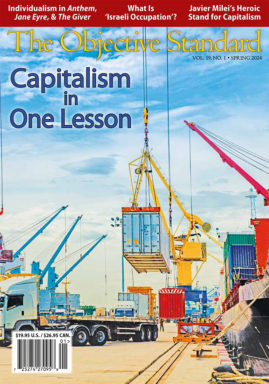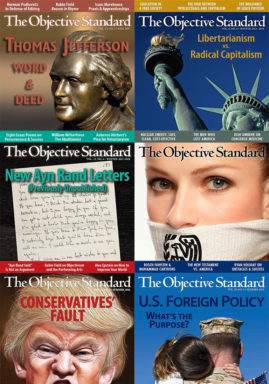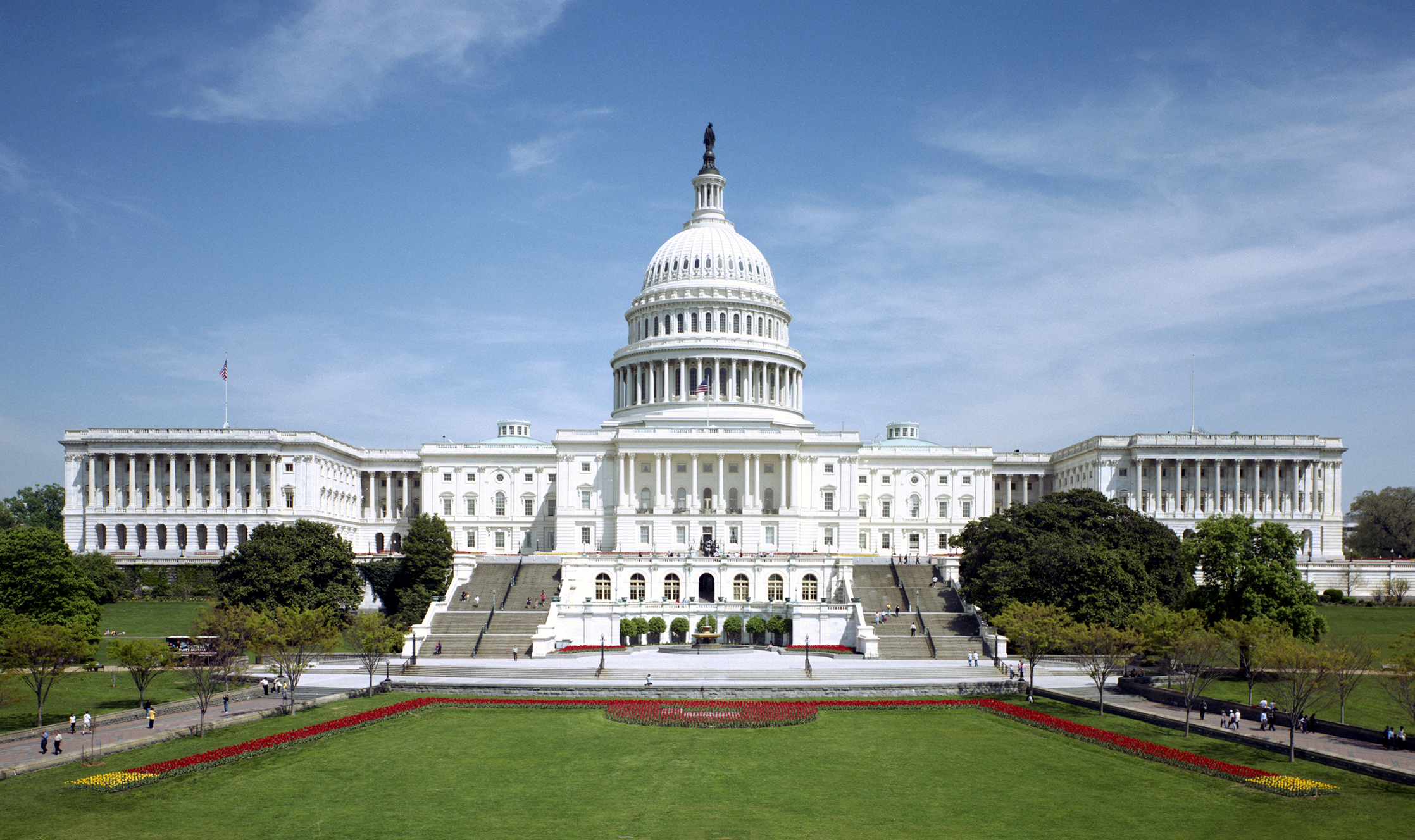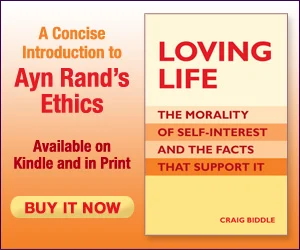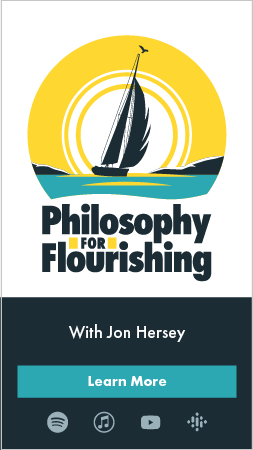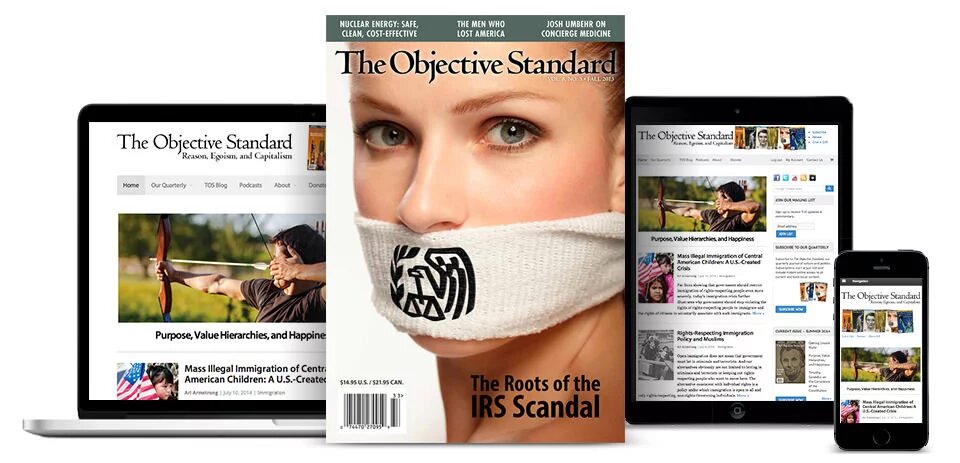On October 23, 2008, former Federal Reserve chairman Alan Greenspan testified before Congress that the current financial crisis was a consequence of the free market. His testimony marked the culmination of a narrative that had been developing since the start of the crisis.
Decades of “deregulation” and a “hands-off” approach to the financial industry, we are told, have unleashed Wall Street greed. The free market has proved itself incapable of policing the financial sector—a fact so obvious that even Greenspan, the alleged arch-defender of capitalism, could not deny it.
By and large, the public finds the narrative compelling. After all, most people today regard it as self-evident that the free-market economic system is responsible for a whole host of other problems and crises, such as the accounting scandals of 2002–03, the recent (and past) energy price spikes, and our ailing health-care system.
And, so the story goes, if the free market is the cause of these problems, then the solution is obvious: The government must intervene in the market. Thus the accounting scandals brought us Sarbanes-Oxley; the high price of oil and gas led to calls to shackle “speculators” (just as the energy crisis in the 1970s spawned the CAFE fleet mileage standards); the health-care crisis is paving the way for a complete government takeover of medicine; and the financial crisis has so far given us a cascade of bailouts, nationalizations, and stimulus schemes.
But all of this anti–free-market demagoguery is based on a myth. The free market could not have been the source of any of these problems because, whatever you wish to call America’s economy post World War I, you cannot call it a free market.
To be sure, today’s economy does have significant elements of freedom. Americans can own private property, choose their jobs, select from a smorgasbord of goods. Entrepreneurs can start businesses, hire and fire workers with relative ease, reap virtually unlimited rewards if successful. But the fact that our economy falls short of a socialist dictatorship does not make it a free market. America today is a mixed economy—a market that retains some elements of freedom but is subject to pervasive, entrenched, and expanding government control.
The actual meaning of “free market,” which advocates of government intervention seldom state openly, is: the economic system of laissez-faire capitalism. Under capitalism, the government’s sole purpose is to protect the individual’s rights to life, liberty, property, and the pursuit of happiness from violation by force or fraud. This means a government limited to three basic functions: the military, the police, and the court system. In a truly free market, there is no income tax, no alphabet agencies regulating every—or any—aspect of the economy, no handouts or business subsidies, no Federal Reserve. The government plays no more role in the economic lives of its citizens than it does in their sex lives. It does not impose on them the “will of God” or the “will of Society.” It simply protects their rights.
Thus a free market is a market totally free from the initiation of physical force. Under such a system, individuals are free to exercise and act on their own judgment. They are free to produce and trade as they see fit. They are fully free from interference, regulation, or control by the government. As the preeminent defender of the free market, Ayn Rand, put it:
In a capitalist society, all human relationships are voluntary. Men are free to cooperate or not, to deal with one another or not, as their own individual judgments, convictions, and interests dictate. They can deal with one another only in terms of and by means of reason, i.e., by means of discussion, persuasion, and contractual agreement, by voluntary choice to mutual benefit. The right to agree with others is not a problem in any society; it is the right to disagree that is crucial. It is the institution of private property that protects and implements the right to disagree—and thus keeps the road open to man’s most valuable attribute (valuable personally, socially, and objectively): the creative mind.1
It is this fact that gives rise to every other distinctive feature of a free market: constant innovation, unrelenting competition, the absence of price controls, ever-expanding prosperity.
Historically, a fully free market has not yet existed. But it was America’s unsurpassed economic freedom that enabled her, in the period between the Civil War and World War I, to become an economic juggernaut, and the symbol of freedom and prosperity. Those decades saw real GDP per capita more than double.2 They saw a rise in life expectancy from about forty years to more than fifty-five.3 They saw the birth of the skyscraper, the camera, the telegraph, the oil industry, the electric light, the mass-produced automobile, the airplane, modern medicine, and the middle class.
Although that freedom has largely been curtailed, one sector that remains relatively free is the high-tech industry. Consider, for instance, the computer industry, which, throughout the late 20th century had no significant barriers to entry, no licensing requirements, no government-mandated certification tests. There were no regulations dictating how to build microchips or how to write computer code. There were few government efforts to save failing businesses, or to punish successful ones, or to grant special favors to politically connected ones. Individuals, for the most part, were left free to think, produce, innovate, take risks: If they succeeded, they reaped the rewards; if they failed, they could not run to Washington for help.
The results speak for themselves. Between 1981 and 1985, about 6 million personal computers were sold worldwide. Between 2001 and 2005, 855 million were sold.4 Meanwhile, the quality of computers surged and prices plummeted. For instance, the cost per megabyte of memory in a personal computer during the early 1980s was generally between $100 and $200; today it is a few cents.5
The story of Intel’s rise captures the crucial role economic freedom played in launching the information revolution. Intel was founded in 1968 by Robert Noyce and Gordon Moore, two engineers who had a vision of creating a tiny semiconductor chip with as much memory as the mammoth magnetic cores used in the computer mainframes of the day. Noyce and Moore, ignoring the many naysayers, found a handful of investors and set to work. After years of grueling research, they not only succeeded in producing small, powerful memory chips; they pioneered a new industry by creating the world’s first microprocessor.
But Intel’s continued success was not guaranteed. It soon faced intense competition. In order to remain industry leaders, the founders poured their profits back into the company, spending hundreds of millions of dollars a year on research and development.6 The results were so revolutionary—and so consistent—that they engendered Moore’s Law: The number of transistors on a chip will double about every two years.7
Observe the role played by economic freedom. Had Noyce and Moore—two relatively young, unproven entrepreneurs—been forced to convince a “technology czar” to approve or finance their untested venture, it is unlikely they would have gotten off the ground. If they had been forced to build their chips according to government specifications, they would never have been able to innovate. If they had not been subject to dogged competition—if the government had barred competitors, or if Intel had been lavished with political subsidies—it is unlikely they would have continued to devote so many resources to constant innovation. If they had not expected to be able to reap millions—and eventually billions—of dollars should their venture succeed, it is unlikely they would have made the risky decision to start the company in the first place. And even if they had, who would have invested in it?
The computer industry provides a clear example of what an actual free market looks like—and of the efficient, innovative, and productive nature of such a market. It also indicates where America would be today if our economy in general had been free over the past few decades. Unfortunately, our economy has been far from free; instead of performing the single, limited function of protecting individual rights, our government has been growing out of control.
Consider government spending. The latest federal budget surpassed $3 trillion,8 not including off-budget spending such as the recent bailout packages, up from less than $14 billion a century ago.9 In order to finance this spending orgy, the government taxes virtually every aspect of life. Consider just a few of the taxes Americans are subject to: federal income tax, Social Security tax, Medicare tax, federal unemployment tax, state unemployment tax, corporate income tax, gift tax, estate tax, gasoline tax, tobacco tax, property tax, state income tax, sales tax, car tax, vehicle sales tax, boat tax, hotel room tax, alternative minimum tax, capital gains tax, school tax, luxury taxes, tariffs, workers’ compensation tax. All told, about 40 percent of the average American’s income goes to taxes, draining the market of potential capital and dampening the incentive to produce.10
What accounts for most of this spending? Not the government’s free-market functions, but America’s burgeoning welfare state. Nearly 60 percent of the federal budget in 2007 went to fund social welfare measures.11 And many businesses are on the dole as well. The most recent farm bill, for instance, was a $307 billion pork-filled handout to farmers.12 This has nothing to do with capitalism. Under capitalism, individuals and businesses must earn their wealth (or rely on private charity); they are forbidden to wrest it from their fellow citizens through government favors.
For those wishing to run their own business, the extent of government’s role in markets is unmistakable. The road to starting a business today is paved with obstacles—not the least of which is raising start-up capital when nearly half of Americans’ wealth is taxed away. Add to that: licensing laws, zoning requirements, and a never-ending list of permits and approvals. And should you persevere through that morass, you will find yourself continually saddled with countless regulations and controls dictating virtually every aspect of your business: from where you are allowed to take lunch breaks to what kind of lighting you can use.
Today, more than fifty regulatory agencies enforce tens of thousands of rules on individuals and businesses; the average length of the Federal Register, which lists regulatory rules, has recently hovered around seventy-five thousand pages. One estimate puts the annual cost of compliance for the U.S. economy at more than $1 trillion.13
And, of course, every business is subject to the whims of Federal Reserve central bankers, who exercise virtually unlimited control over the U.S. monetary and banking systems.
The foregoing are only a few ways in which the government initiates force against individuals and businesses in the marketplace today. And just as the elimination of force is what makes possible the tremendous benefits of the free market, so the application of force into markets undermines those benefits. A controlled market perverts incentives, saps resources, dampens motivation, wipes out options, and makes long-range planning impossible.
Nowhere is this clearer than in the highly controlled U.S. automotive industry and in the housing market.
In November 2008, CEOs of Detroit’s Big Three auto companies begged Congress for a $25 billion bailout (they later settled for $15 billion to tide them over until a larger package could be put together). Congress assailed the executives for their poor management. Senate banking chairman Christopher Dodd declared, “They’re seeking treatment for wounds that, I believe, are largely self-inflicted.”14 But whatever the mistakes of Ford, Chrysler, and General Motors, the fact is that the government’s anti–free-market policies have made it virtually impossible for them to operate profitably.
The U.S. automotive industry is subject to thousands of regulations, but most relevant here are pro-union laws, such as the Wagner Act, which force Detroit to deal with the United Auto Workers (UAW), and the Corporate Average Fuel Economy (CAFE) law. These laws—not some innate inability to produce good cars—put American companies at a severe competitive disadvantage with foreign automakers.
In a free market, individuals would be free to form and join unions, while employers would be free to deal with those unions—or not. But under current law, the UAW is assisted by the coercive power of government. Individuals who wish to work for Detroit auto companies are forced to join the UAW—and Detroit is forced to hire UAW workers. This gives the UAW the ability to command above-market compensation for its members, to the detriment of the auto companies.
Compounding this, CAFE standards force Detroit to manufacture small, fuel-efficient cars in domestic (read: UAW) factories. These cars are notorious money-losers for American auto companies, swallowing up tens of billions of dollars.15 But under CAFE, the Big Three are barred by law from focusing on their more profitable lines of larger vehicles, from producing their fuel-efficient fleet overseas, and thus even from using the threat of offshoring as bargaining leverage.
To make matters worse, Washington has been using its purse strings to urge U.S. automakers to manufacture “environmentally friendly,” but bottom-line unfriendly, cars. Indeed, just prior to Detroit’s most recent $25 billion request, it had been granted $25 billion from Washington for “green retooling.” The most notable outcome of Washington’s push for green vehicles is the Chevy Volt—an electric car that can travel all of forty miles before having to be recharged for six hours. The price tag is a whopping $40,000—which does not cover the car’s cost, but that is beside the point: The Volt will be a subsidy magnet. Buyers have already been promised a $7,500 tax benefit, and undoubtedly more goodies are on the way. All of this is to create cars that consumers do not want, and that would never have been built on a free market.
Contrast this with foreign-owned manufacturers that build cars in the United States. Companies such as Honda and Toyota, which are not forced to use union workers and are not as impaired by CAFE standards given that they specialize in building smaller vehicles, are not begging for bailouts. Revealingly, their workers earn virtually the same wages as their union counterparts. What their workers have not been able to do is gain the above-market benefits packages that are crippling Detroit. As the Wall Street Journal noted:
Hourly labor costs [including benefits] are $44.20 on average for the non-Detroit producers, in line with most manufacturing jobs, but are $73.21 for Detroit. . . . Over the decades the United Auto Workers won pension and health-care benefits far more generous than in almost any other American industry. As a result, for every UAW member working at a U.S. carmaker today, three retirees collect benefits; at GM, the ratio is 4.6 to one.16
This is not the insignia of poor management decisions but of management constrained by destructive government policies. Whatever Detroit’s failures, it is unseemly for a U.S. senator to label its financial wounds “self-inflicted” in the face of three decades of government policies that hamstrung them while their competition remained relatively free. But such is the power of the government when it exercises control over men’s economic lives. Although the free market does not guarantee success and cannot erase the possibility of mistakes, the unfree market can make success impossible.
Imagine, for instance, that the same sort of antimarket policies being imposed on Detroit had been imposed on the computer industry. Suppose that in the mid-1980s, as IBM-compatible computers were battling Apple for preeminence, the government had decided it favored Apple computers, and would give tax incentives for computer buyers to purchase them. This would have hobbled and very likely wiped out IBM, Intel, Microsoft, and thousands of other companies. And it would have been bad for Apple. Today Apple is an innovative, well-managed company because market pressures required it to shape up or go bankrupt—pressures that would not have existed had Washington lent it a helping hand. Or, suppose that, in line with CAFE regulations, the government had decreed an optimal amount of memory or computer power consumption to which manufacturers had to adhere. Such restrictions would have aborted the information revolution in its infancy.
Another telling example of the difference between and the confusions regarding free markets and regulated markets is provided by the housing industry. The conventional view of the housing crisis is that it resulted from a housing market free of government control—a frontier of “cowboy capitalism” that allowed greedy lenders to dupe trusting home buyers into taking out loans they could not afford.
But, once again, the notion that the housing market was free is a total fantasy.
In a free market, the government would neither encourage nor discourage home ownership. Individuals would be free to decide whether to buy or to rent. Lenders would lend based on their expectation of a profit, knowing that if they make bad loans, they will pay the price. Interest rates would be determined by supply and demand—not by government fiat.
But that is not what happened in our controlled market. Instead, the government systematically intervened to encourage home ownership and real estate speculation.
- For years, the Federal Reserve held interest rates below the rate of inflation, encouraging massive borrowing, much of which was channeled into the real estate market.17
- Political leaders used their bully pulpit to encourage lenders to increase home ownership. For instance, in a 2002 speech trumpeting public and private efforts to promote home ownership by minorities, George W. Bush declared, “I believe there is such a thing as the American Dream. . . . Owning a home is part of that dream, it just is.”18
- By making mortgage payments tax deductible,19 and real estate capital gains exempt from taxable income,20 the government created an artificial incentive to invest in real estate.
- The Community Reinvestment Act forced banks to lower their underwriting standards in order to promote home loans to high-risk borrowers.21
- The government created and implicitly guaranteed the debt of Fannie Mae and Freddie Mac. At the behest of Washington, these organizations purchased and securitized high-risk mortgages, further encouraging banks to lower their lending standards.22
This was a free market?
Unquestionably, today’s crisis is complex, and to identify its cause is not easy.23 But the opponents of the free market are not interested in identifying the cause. Their aim since day one has been to silence the debate and declare the matter settled: We had a free market, we had a financial crisis; therefore, the free market was to blame. The only question, they would have us believe, is how, not whether, the government should intervene.
But they are wrong. There was no free market. And when you look across the American economy, what you see is that the freer parts—such as the high-tech industry—are the most productive, and the more controlled parts—such as the automotive and banking and housing industries—are in crisis.
Is this evidence that we need more government intervention—or more freedom?
You might also like
Acknowledgment: The authors would like to thank Onkar Ghate, senior fellow of the Ayn Rand Institute, for his invaluable editorial assistance with this project.
Endnotes
1 Ayn Rand, “What Is Capitalism?” Capitalism: The Unknown Ideal (New York: Signet, 1967), p. 19.
2 See “What Was the U.S. GDP Then? Annual Observations in Table and Graphical Format for years 1790 to Present”: http://www.measuringworth.org/usgdp/. Measured in 2000 dollars.
3 See “Life Expectancy by Age, 1850–2004”: http://www.infoplease.com/ipa/A0005140.html.
4 Computer Industry Almanac, 25-Year PC Anniversary Statistics: http://www.c-i-a.com/pr0806.htm.
5 Creative Computing, “Historical Notes about the Cost of Hard Drive Storage Space”, December, 1981: http://www.alts.net/ns1625/winchest.html.
6 Daniel Gross, Forbes Greatest Business Stories of All Time (New York: John Wiley & Sons, 1996), pp. 247–65.
7 See http://www.intel.com/technology/mooreslaw/index.htm.
8 Robert’s US Government Info Blog, “FY 2009 Federal Budget Proposal”: http://usgovinfo.about.com/b/2008/02/04/fy-2009-federal-budget-proposal-now-online.htm.
9 Budget of the United States Government, Fiscal Year 2009: http://www.gpoaccess.gov/usbudget/fy09/pdf/hist.pdf. All figures in 2007 dollars.
10 MSN Money, “Your real tax rate: 40%”: http://articles.moneycentral.msn.com/Taxes/Advice/YourRealTaxRate40.aspx.
11 http://www.usgovernmentspending.com/#usgs302.
12 Brian M. Riedl, “Seven Reasons to Veto the Farm Bill”: http://www.heritage.org/Research/Agriculture/bg2134.cfm.
13 Clyde Wayne Crews and Ryan Young, “A ‘Hidden Tax’ Of Rules Hits Economy”: http://cei.org/articles/%E2%80%98hidden-tax%E2%80%99-rules-hits-economy; W. Mark Crain, “The Impact of Regulatory Costs on Small Firms”: http://www.sba.gov/ADVO/research/rs264tot.pdf.
14 Greth Hitt and Matthew Dolan, “Big Three Plead for Aid”: http://online.wsj.com/article/SB122703811621838291.html.
15 Neil Boudette and Joseph B. White, “How Slumping Market for SUVs Is Hurting Detroit’s Bottom Line,” Wall Street Journal, May 13, 2005.
16 “America’s Other Auto Industry”: http://s.wsj.net/article/SB122809320261867867.html.
17 See http://www.federalreserve.gov/releases/h15/data/Monthly/H15_FF_O.txt.
18 See http://www.whitehouse.gov/news/releases/2002/06/20020617-2.html.
19 Roger Lowenstein, “Who Needs the Mortgage-Interest Deduction?”: http://www.nytimes.com/2006/03/05/magazine/305deduction.1.html?_r=1&pagewanted=all.
20 See http://www.law.cornell.edu/uscode/html/uscode26/usc_sec_26_00000121----000-.html.
21 Peter J. Wallison, “Cause and Effect: Government Policies and the Financial Crisis”: http://www.aei.org/docLib/20081203_1123724NovFSOg.pdf.
22 Ibid.
23 For an in-depth account of the economic causes, see Lawrence H. White, “How Did We Get into This Financial Mess?”: http://www.cato.org/pub_display.php?pub_id=9788.
